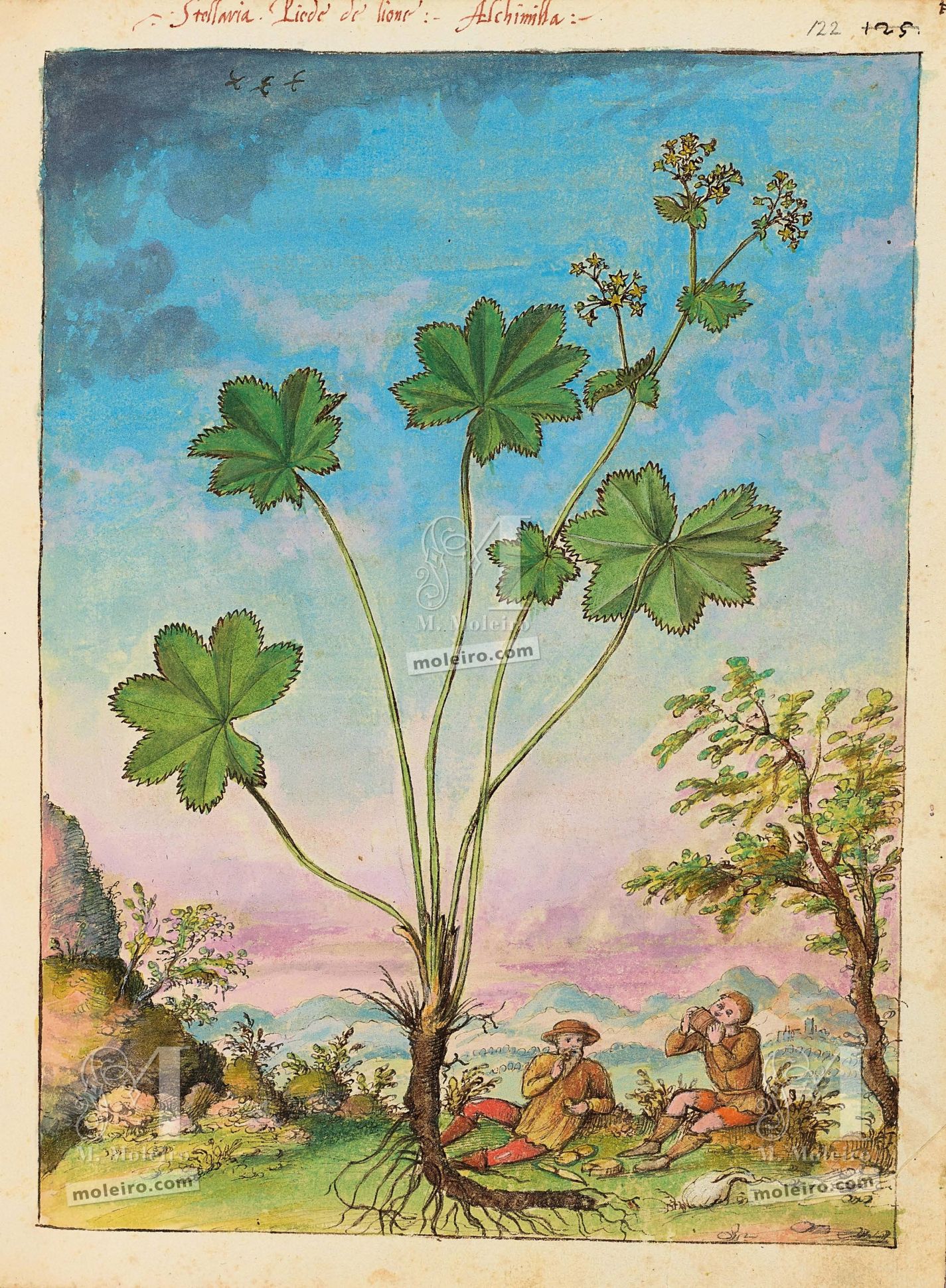"Lady’s mantle, which some call lion’s foot and others alchemilla, is a plant which grows above all in mountain meadows. Its leaves are very like those of the mallow, but are firmer, with denser veins and more crinkled; there are usually eight leaves, sometimes less, and their notches are all much more conspicuously toothed, in such a way as to look like a star when the leaf is fully open. Its stem grows to the height of a palm and often even more; from it many little stalks grow, which bear at their top the star-like flowers, green in colour shading towards yellow and very tiny. The root is as thick as a finger, and longer than a palm and a half. It grows in May and flowers in June. It is quite excellent for healing internal and external wounds; for this reason it has been used by German surgeons in drinks for mortal wounds and for the bowels, and also for fistulas. The powder of the dried plant, drunk in water distilled from the fresh plant or in a decoction of the dried one, heals bowel hernias in children. A spoonful at a time of this same powder diluted in wine or broth, taken for fifteen or twenty days, is given, not without success, to sterile women if the viscosity of the humours is preventing the seed from remaining in the uterus. The distilled water, first drunk and then applied to the genital parts, stops leucorrhoea; by continuing to take it, it shrinks the woman’s parts in such a way as to make non-virginal women appear to be virgin, above all when they remain sitting for several days in the decoction. Pieces of cloth soaked in its water and applied to the breasts cause them to pull up, so that they become round and firm." (f. 121v).
This plant grows in cool places in northern Italy, the north and mountain areas of Spain, in France, Great Britain and Europe. It is very difficult to identify species in this genus because their distinguishing features are not always clear. It contains essential oil, glycosides, tannins, bitters and traces of salicylic acid. The cooking water of its leaves and flowers can staunch bleeding, heal wounds and aid the digestion, due to its anti-inflammatory and astringent properties.
Ramón Morales ValverdeReal Jardín Botánico de Madrid
(Extract from the commentary volume of
Mattioli's Dioscorides illustrated by Cibo)
